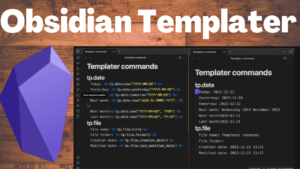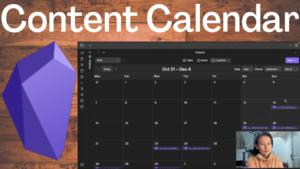I have been working on a project called Building a PKM (a.k.a Personal Knowledge Management) System Using Obsidian (The list). And a PKM system usually contains three parts: input, organization/connection, and output. My favorite one is the Output because it indicates how we express ourselves to live purpose-driven life. And this article will illustrate the high-level value of the Output, along with some practical tips for managing the Output using Obsidian.
Output Is the Representation of Our Life Purpose
Turning our knowledge into effective actions is called Output. The outputs could be some tangible results, namely formal product documentation, a meeting summary, a blog post, a video script, a book, etc.
All output formats are obvious to most of us, but we might miss the representation of Output in our life. To better understand it, I would like to cite two quotes below, as they have already impacted my life and I hope you will be inspired as well to better your life:
“We only have one goal which is to fulfil the highest, truest expression of myself as a human being.”
— Oprah Winfrey
which shares the same life message as the words of Sadhguru:
“The only purpose of our life is to reach the fullest maximum — striving to be better than yesterday. “
— Sadhguru
So, what is the relationship between our life purpose and the Output of the PKM system?
The fundamental reason and the motive for us to have a deep understanding of the importance of the PKM system in our life/work is that we want an effective PKM to serve our ONLY goal — expressing ourselves to the highest level (reach the maximize ourselves in this world) to connect our inner and external universe.
Tips for Creating More and Better Outputs
Put Information to Use A.S.A.P
Nowadays we are constantly force-feeding ourselves more and more information. Very often, we are just passively consuming whatever comes to our eyes, but never actually putting it to use.
Information only becomes knowledge when we put it to use.
In other words, if we cannot use it right away, we might choose not to prioritize it on our information consumption list. Instead, we should strategically and quickly move on to other useful information. Therefore, awakening our consciousness of consuming information is important.
Show Your Work
I don’t find any more inspiring book than Show Your Work to help us come to the realization that we could and should express ourselves freely, enjoyably and effortlessly. Showing our work to the world through internet distribution is what we could do nowadays.
I have personally shared some of my important life changes in this article – How “Show Your Work” Has Changed My Life.
As you might see, I not only share my “accomplishments” but also the process. We don’t have to make a big success to share or show off on the internet, but we should treat the internet as a high-speed highway to drive ourselves close to our maximum. Sharing your learning or working process or even your failure experience would provide you with some feedback from others globally, which is an amazing experience in itself.
Although content creators such as YouTubers or podcasters are in trend, you don’t have to be caught up by the idea of content creators producing content on the internet. I believe nearly all of us are content creators in one way or another. We only need to expand the concept of the content creator. Let’s say, when you just casually write a post on your Facebook page, that post goes to the public immediately, and then you are the creator of that piece of content. As long as you post something on the internet, you are showing your “work”. The work could be casual or serious, but very often it’s reflecting your feeling at that moment. Additionally, musicians are also content creators because they share their music work on social media as well. Yet, you might wonder how could I Show My Work to the public while working for a company as an employee. Well, you could share what you have learnt from your work, and other interesting experiences at your work as well. You could choose to hold on to all your professional experience to yourself, but if you love the idea of sharing, you might want to give it a try at some point.
The list of content creators can go on and on. So, we are all content creators, creating the content with our style, taste and intention. Once we are satisfied with the picture of being a content creator, the next step is to establish a system to help us manage our content/output. Let’s illustrate it using Obsidian (a FREE note-taking tool).
Managing Outputs in Obsidian
Tracking the Output Status Using (Nested) Tags
For example, the Output medium type:
output/blog
output/video
The Output status:
output/status/ongoing
output/status/done
output/status/paused
Adding these tags to the YAML code block inside your Obsidian note.


If you want to learn more about using tags in Obsidian, you could check out my previous article:
How to Create and Use Tags in Obsidian YAML
Add metadata of tags to Obsidian notes using YAML front matter
Creating the MoC (Map of Content) for Your project Using Links
A map of content(MOC) is a document containing a curated list of links where you source all relevant notes for a particular topic.
For example, whenever I start a new project, I will first create an MoC as below:

A project-based system can effectively focus our efforts and energy on producing outputs rather than passively consuming information.
Viewing the Outputs for Your Project Using Dataview Plugin
We could some views such as table view or list view for the outputs linked to our project using Dataview.js as below:

If you’re new to the Dataview plugin, you could check out my previous article on how to use it:
Use Obsidian Dataview Plugin to Automate Our Vault
Wrap Up
Regardless of what type of profession we are in or what kind of life we choose to live, bear in mind that there is no ceiling point for our potential. Starting to become active information consumers to live our life as close as possible to our maximum.
Check out more tutorials on this website.



